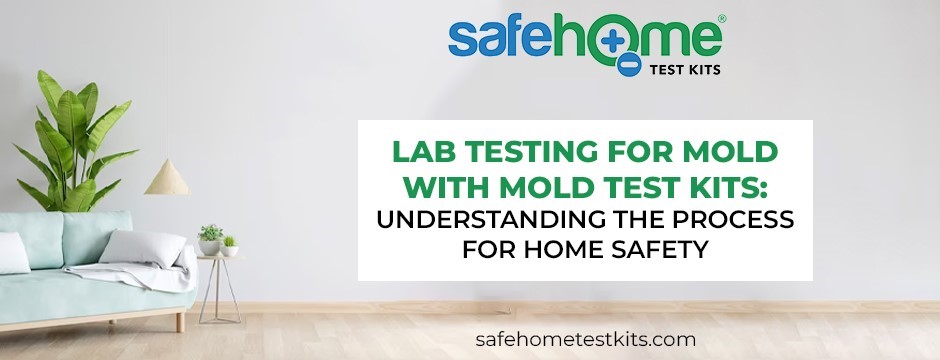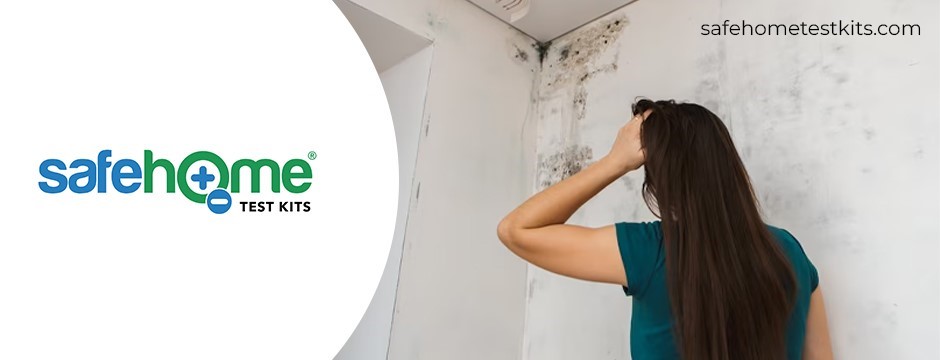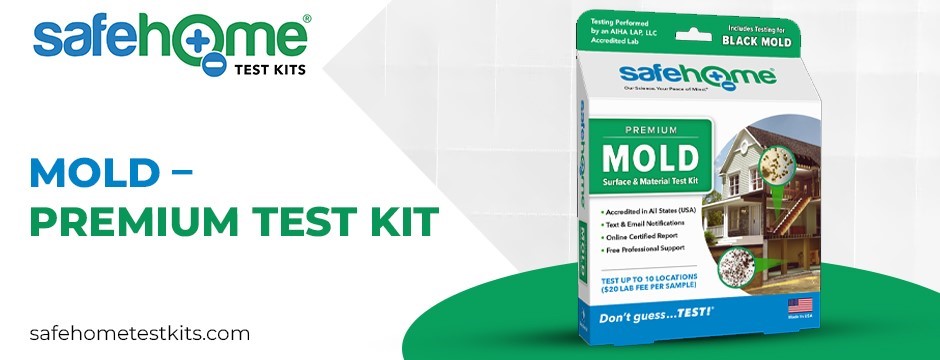Lab Testing for Mold with Mold Test Kits: Understanding the Process for Home Safety

Mold, a common household concern, can have significant implications for a home’s structural integrity and its inhabitants’ health. Lab testing for mold is crucial in identifying and addressing mold issues effectively. In this comprehensive guide, you will walk through mold testing with Mold Test Kits, shedding light on its importance, methodologies, and the steps homeowners can take to ensure a safe living environment.
The Importance of Mold Testing
Protecting Your Health
Mold exposure can lead to various health issues, including respiratory problems, allergies, and skin irritations. Lab testing for mold helps identify harmful mold species, allowing homeowners to take prompt action to safeguard their health.
Preventing Structural Damage
Mold can compromise the structural integrity of a home over time. By detecting mold early through lab testing, homeowners can prevent extensive damage to walls, ceilings, and other structural components, avoiding costly repairs.
Common Signs of Mold Infestation
Visible Mold Growth
Obvious signs of mold, such as black spots or discoloration on walls, ceilings, or other surfaces, indicate a potential infestation.
Musty Odor
A persistent musty or earthy odor can indicate hidden mold growth within walls, ceilings, or other concealed areas.
Water Damage History
Homes with a history of water damage, leaks, or flooding are at an increased risk of mold growth. Lab testing becomes crucial in such scenarios to assess the extent of mold infestation.
Understanding the Mold Testing Process
Initial Assessment and Consultation
Before initiating mold testing with Home Test Kits for Mold, homeowners should thoroughly assess their property. Identify areas with visible mold, note musty odors, and provide a detailed history of water damage incidents. Consult a certified mold inspector to discuss concerns and determine the appropriate testing strategy.
Selecting Sampling Methods
There are different sampling methods employed during mold testing, each serving specific purposes:
- Air Sampling: Collects airborne mold spores, providing insight into the overall mold concentration in the indoor environment.
- Surface Sampling involves swabbing or tape-lifting samples from surfaces with visible mold growth.
- Bulk Sampling: In this method, actual pieces of materials suspected of harboring mold are collected and sent for analysis.
The choice of sampling method depends on the nature of the suspected mold infestation and the testing goals.
Hiring Certified Mold Inspectors
Certified mold inspectors have the expertise to conduct thorough assessments and collect accurate samples. Homeowners should ensure that the inspectors they hire are certified by reputable organizations, assuring their proficiency in mold testing methodologies.
Laboratory Analysis
Once samples are collected, they are sent to a certified laboratory for analysis. The lab will identify the types of mold present and assess their concentration levels. This information is crucial for determining the severity of the mold problem and guiding the formulation of an effective remediation plan.
Interpreting Mold Test Results
Mold Species Identification
Lab results will identify the types of mold present in the samples. Some molds are more harmful than others; identifying specific species helps gauge potential health risks.
Quantifying Mold Concentrations
The concentration of mold spores in the air or on surfaces is a key metric in mold testing results. Elevated levels may indicate a significant mold infestation that requires prompt remediation.
Comparison with Outdoor Samples
A comprehensive mold assessment often includes comparing indoor mold samples with samples collected from the outdoor environment. This comparison helps determine whether the mold present indoors is within normal environmental levels or if there is a notable discrepancy.

Next Steps: Mold Remediation and Prevention
Remediation Strategies
Upon receiving mold test results, homeowners should promptly engage in mold remediation efforts. Depending on the severity of the infestation, remediation may involve cleaning, disinfecting, or, in more severe cases, removing and replacing affected materials. Hiring professional mold remediation services ensures thorough and effective treatment.
Addressing Underlying Moisture Issues
Mold thrives in damp environments, making it essential to identify and address the underlying moisture issues that contribute to mold growth. Fixing leaks, improving ventilation, and ensuring proper drainage around the home are crucial steps in preventing future mold problems.
Regular Monitoring and Maintenance
After remediation, homeowners should implement regular monitoring and maintenance practices to prevent the recurrence of mold issues. This includes routine inspections, prompt repairs of leaks or water damage, and maintaining optimal indoor humidity levels.
DIY Mold Testing Kits: Pros and Cons
Pros of DIY Testing Kits
Affordability: DIY testing kits are generally more budget-friendly than hiring professional mold inspectors.
Convenience: Homeowners can collect samples at their convenience without scheduling appointments.
Cons of DIY Testing Kits
Accuracy Concerns: DIY kits may provide a different level of accuracy than professional inspections, leading to potential false negatives or positives.
Limited Interpretation: DIY kits may need more detailed analysis and interpretation provided by certified mold inspectors and laboratories.
Potential Contamination: Improper sampling techniques during DIY testing can lead to sample contamination, affecting the accuracy of results.
While DIY kits offer a preliminary assessment, professional mold inspections remain the gold standard for accurate and reliable results.

Secure Your Home, Ensure Your Health: Safe Home® Mold – Premium Test Kit
Introducing the Mold – Premium Test Kit from Safe Home® at just $14.95, your ultimate solution for safeguarding your home and family from potential mold hazards. Worried about hidden mold affecting your well-being? Fear not, as our comprehensive kit offers easy sample collection with supplies for up to 10 tests, allowing you to conduct thorough home inspections without breaking the bank. Pay only for the samples you submit, ensuring cost-effectiveness.
Trust is paramount, and that’s why our accredited laboratory holds AIHA LAP, LLC accreditation across all 50 states, providing reliable results for various purposes, from home inspections to real estate transactions. Stay informed throughout the testing process with convenient text and email notifications, and receive a detailed, certified report online within 3-5 business days.
We prioritize your peace of mind, offering free professional support during and after the testing process. With affordable lab fees of just $20 per sample and the option for rush testing services, our kit caters to your unique needs. We provide expanded profile options for those seeking a more in-depth analysis at an additional fee.
Don’t compromise on your home’s safety. Take charge of mold detection with our Mold – Premium Test Kit, ensuring a healthy living environment for your loved ones. Buy Mold Test Kits today and experience reliable, accredited testing that puts your family’s well-being first. Breathe easy, knowing you’re in safe hands with Safe Home®.
Bottom Line
Lab testing for mold with Mold Test Kits is indispensable in maintaining a safe and healthy home environment. Understanding the testing process, interpreting results accurately, and taking prompt remediation measures are vital for mitigating the impact of mold on both structural integrity and the well-being of inhabitants. By prioritizing proactive mold testing and adopting preventive measures, homeowners can ensure their homes’ long-term safety and durability.


